Old gardening books often talk about Pittosporum as a glasshouse plant, and while a cold winter can cause damage to this genus, the changing climate has enabled these prized evergreens to become staples of our gardens. There are at least 52 cultivars of Pittosporum tenuifolium alone, so it is perhaps no surprise that it is the largest group within the genus in cultivation. A New Zealand native, Pittosporum tenuifolium goes by the Māori common name of Kohuhu, and its cultivars display habits of varying shapes and sizes, as well as leaf colours and textures, making it a treasure trove, completely irresistible for those with a soft spot for foliage. Couple this diversity with their quick-growing vigour, the fact they’re easy to propagate from cuttings and a general easy-going habit with a tolerance of clipping, and it is easy to see why it is a plant that appears frequently in gardens.
Jump to
- How to grow pittosporum
- How and when to prune Pittosporum
- Why is my Pittosporum losing its leaves?
- How to propagate Pittosporum
- Where to plant Pittosporum
- When to plant Pittosporum
- Can Pittosporum cope with the cold?
- The best Pittosporum to grow
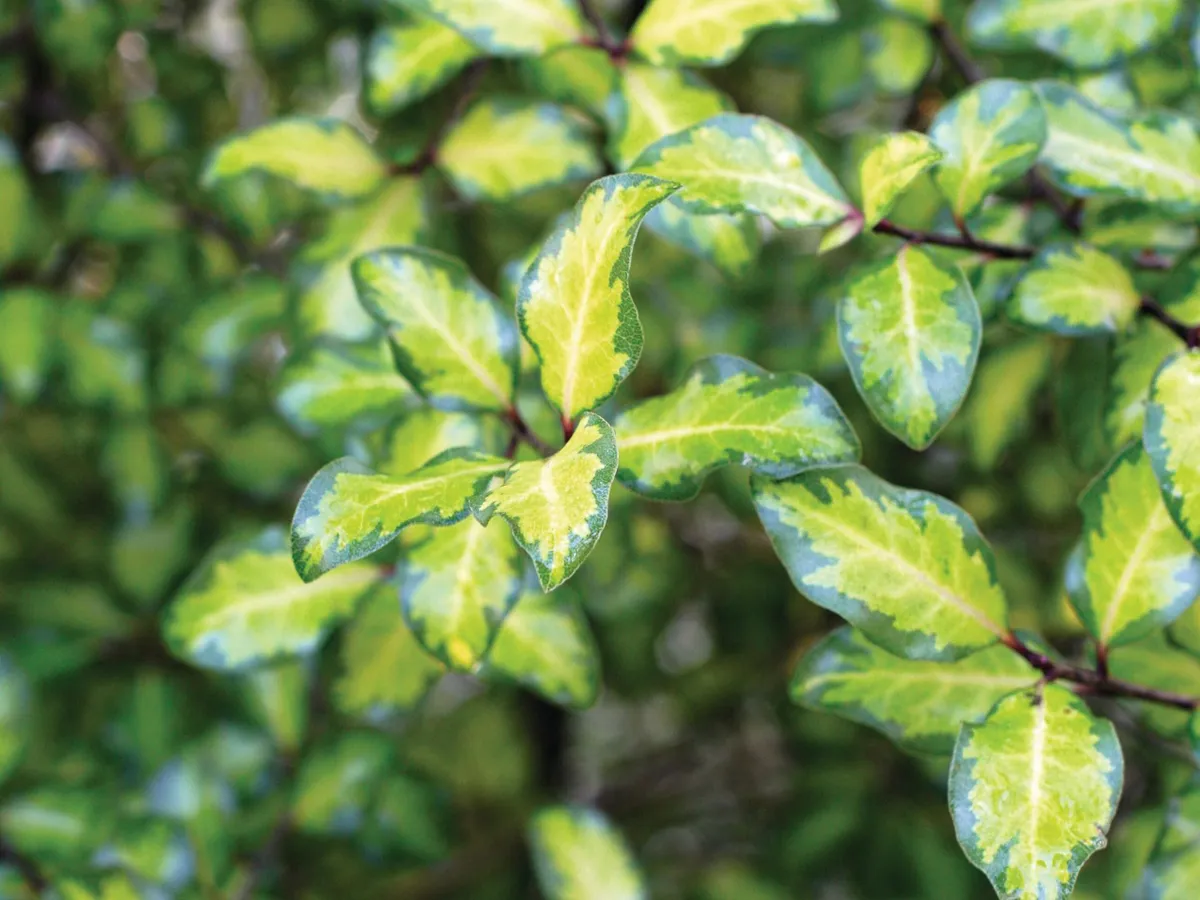
Milder gardens, such as those in coastal districts, exhibit incredible, clearly very old examples, that add a real evergreen backdrop to a garden, easily reaching small- tree proportions, and sometimes self-seeding around. While many of the Pittosporum tenuifolium cultivars are enjoyed for their foliage, it would be remiss not to mention their honey-scented flowers; for what these lack in size, they make up for in colour, many being deep maroon, or even black, and can be borne in rather heavy profusion.
How to grow Pittosporum
How and when to prune Pittosporum
Pittosporum require little pruning, but cultivars of P. tenuifolium can be clipped with great success to create spheres, cylinders, columns or anything of a columnar form, given their natural habit to grow mostly upwards. Clip once or twice in the growing season to create a desired ‘tightness’ – timing is not especially crucial, though ensure the last clip is a month or so before the first frosts.
Read our piece on topiary for more clipping inspiration.
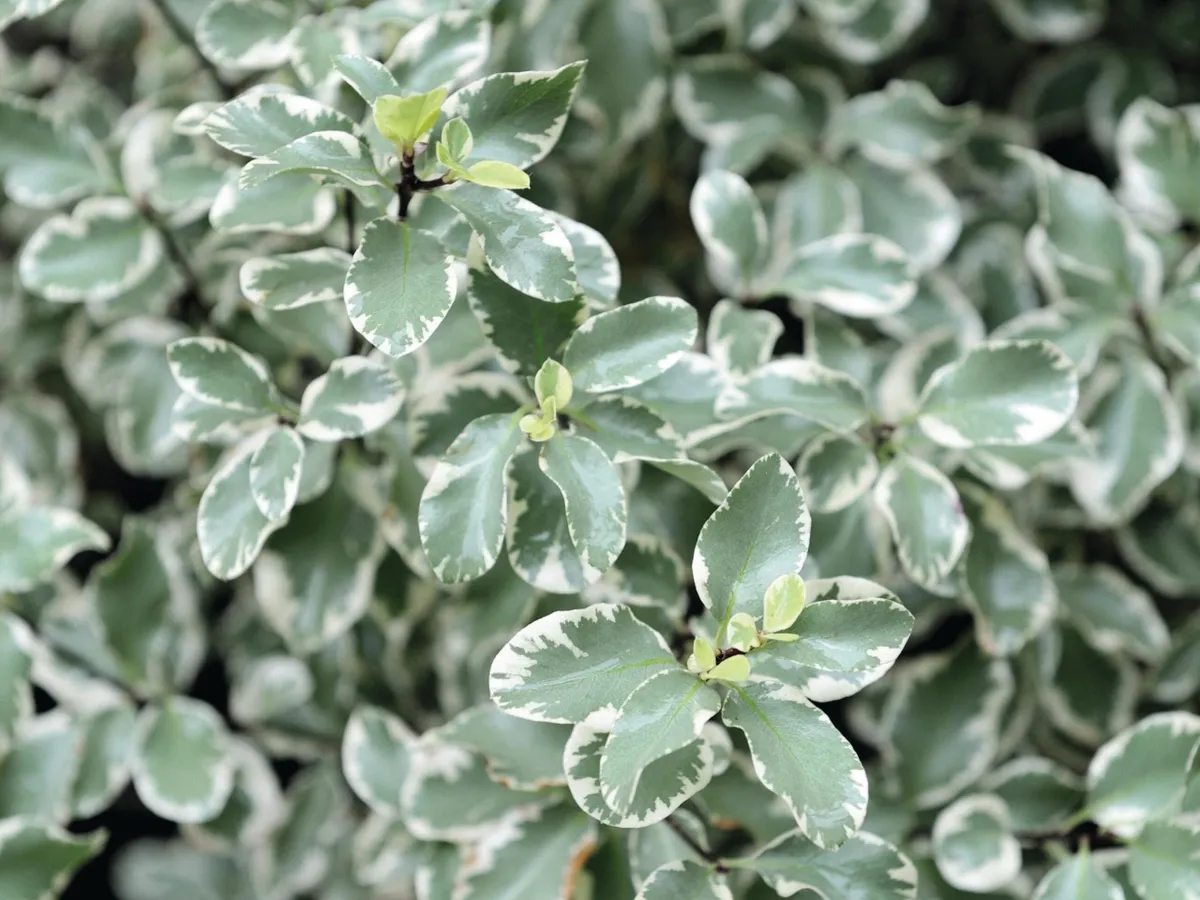
Cultivars with coloured foliage may revert to green, which should be pruned out. Equally, compact cultivars may revert to their regular species habit, which is more vigorous and will manifest itself as a stray shoot growing at twice the pace of the rest of the plant – this should also be removed with a degree of urgency. P. tobira requires little pruning, perhaps nothing more than the removal of deadwood, or any congested branches for aesthetic purposes.
Most Pittosporum will regenerate from old wood, though if the plant was in a stressed condition before being pruned, its regeneration cannot always be guaranteed. Hard pruning should be carried out in late winter, and the plant then subsequently heavily mulched, and watered if the summer is dry, to help it recover fully before the following winter.
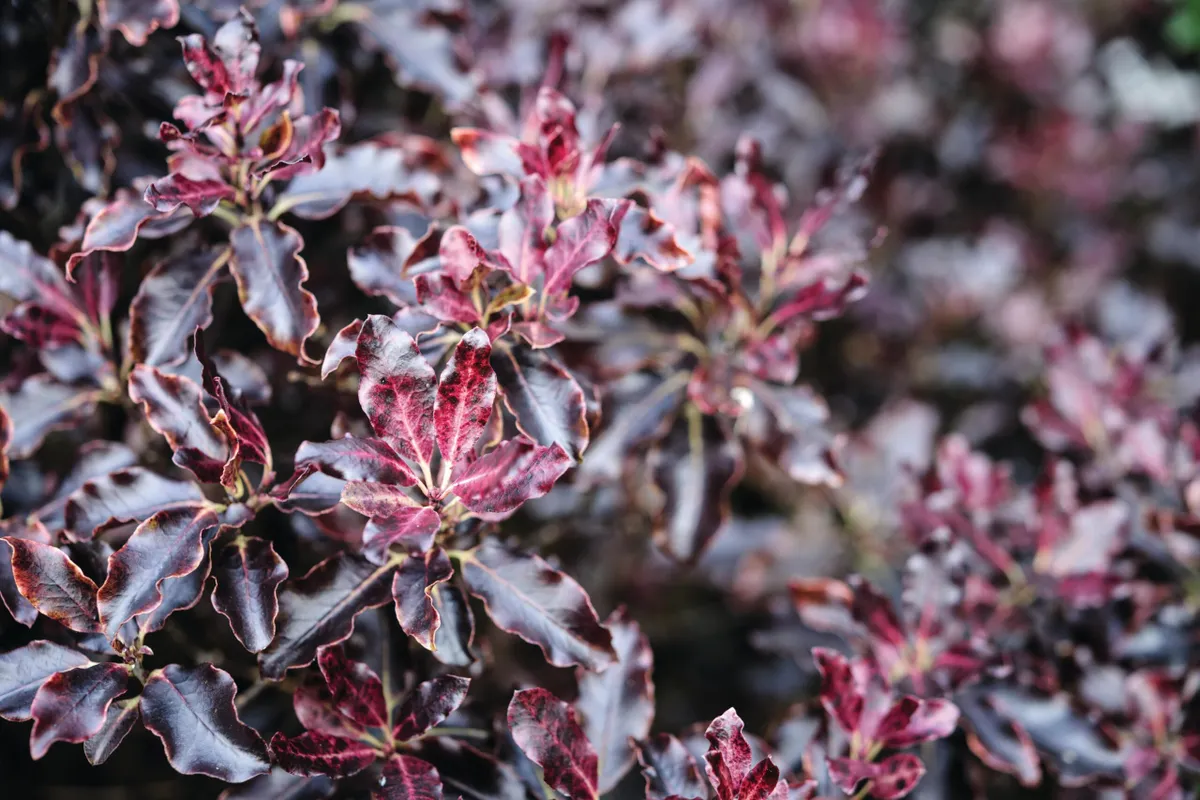
Why is my Pittosporum losing its leaves?
As with most evergreens, Pittosporum have a new flush of leaves in late spring and drop a percentage of their older leaves – this is perfectly natural, if a little untidy. In particularly cold weather, Pittosporum may lose leaves - something which many gardeners experienced in the harsh winter of 2022 in the UK.
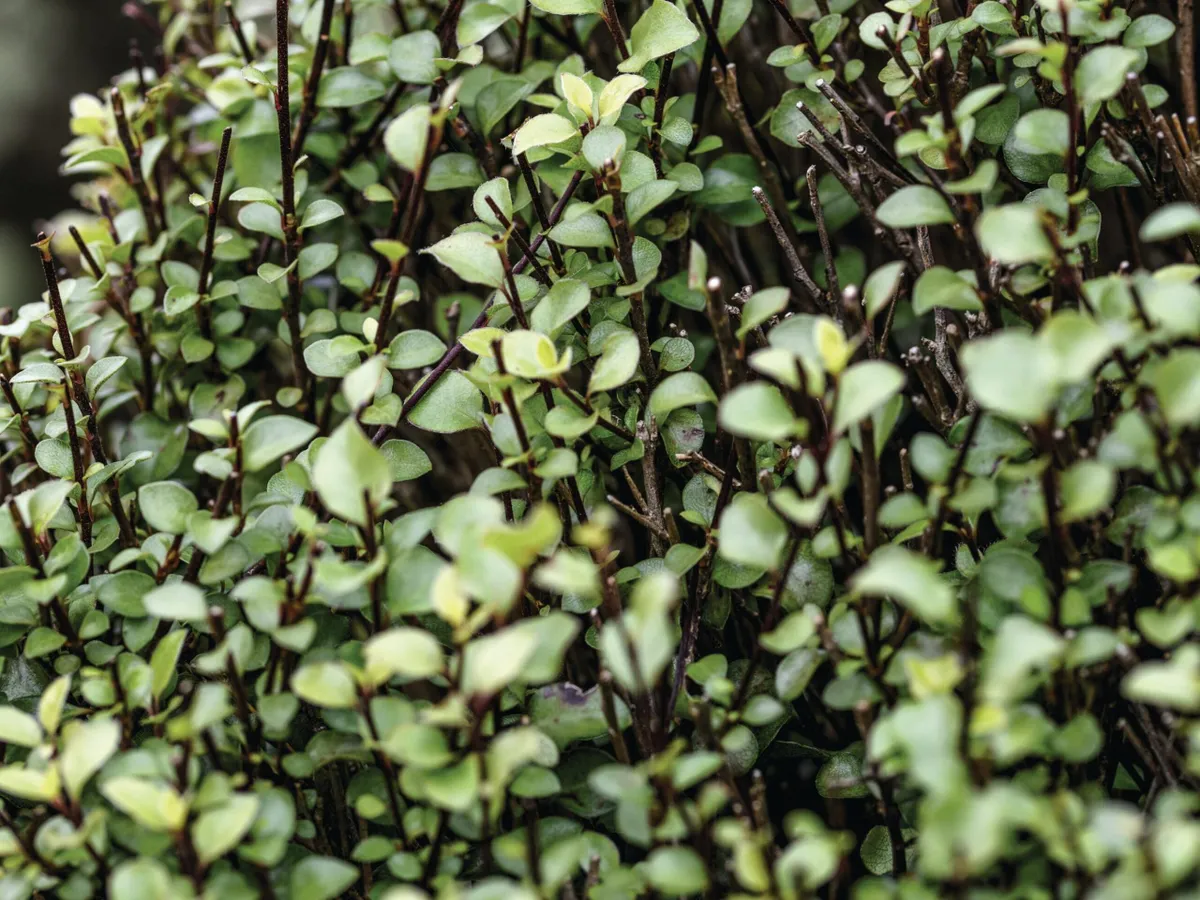
How to propagate Pittosporum
Pittosporum can be easily propagated from semi-ripe tip cuttings in late summer, helped along with a little bottom heat, if possible. Always choose shoots that visually demonstrate the characteristics of the cultivar.
Pittosporum can also be grown from seed when it is set, but the seedlings will be a lottery, and seldom have the parent traits of the cultivar. This of course is not a concern if you are simply growing the straight species.
Where to plant Pittosporum
Pittosporum are generally easy to please, and in milder gardens can live for decades. While they tolerate semi-shade, they prefer full sun. They also like a moisture-retentive but well-drained soil, but will tolerate heavy clay to light sand, though in hot, dry, summers, plants will show some drought stress by dropping older leaves. They can tolerate frequently waterlogged soils for a short time but won’t yield good results or live long.
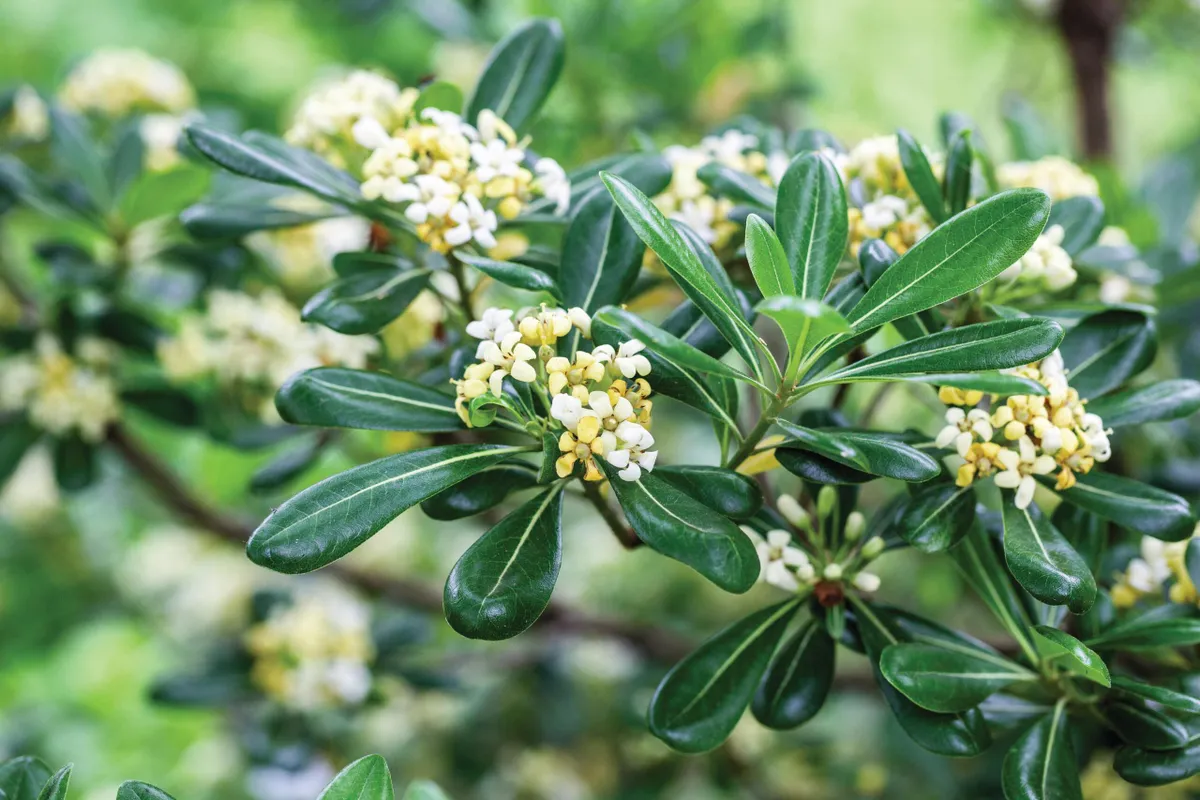
When to plant Pittosporum
Younger plants will always be more at risk of frost, so plant in April to May and be generous with both water and a hearty mulch to stimulate a rapid establishment. Plants do not take kindly to being moved so be sure to plant in their final position.
Can Pittosporum cope with the cold?
Any plant with New Zealand native genes tends to relish a coastal climate, actively enjoying cooler summers, wetter, milder winters and never flinching with as much wind as Mother Nature wishes to blow. In cold gardens that dip below -10ºC in winter, they often defoliate, or in extreme cases, die back to their older wood. This can determine their eventual height, reduce their lifespan, or keep some of the more tender cultivars (which tend to be the heavily variegated or larger-leaved ones) from flourishing to their full potential.
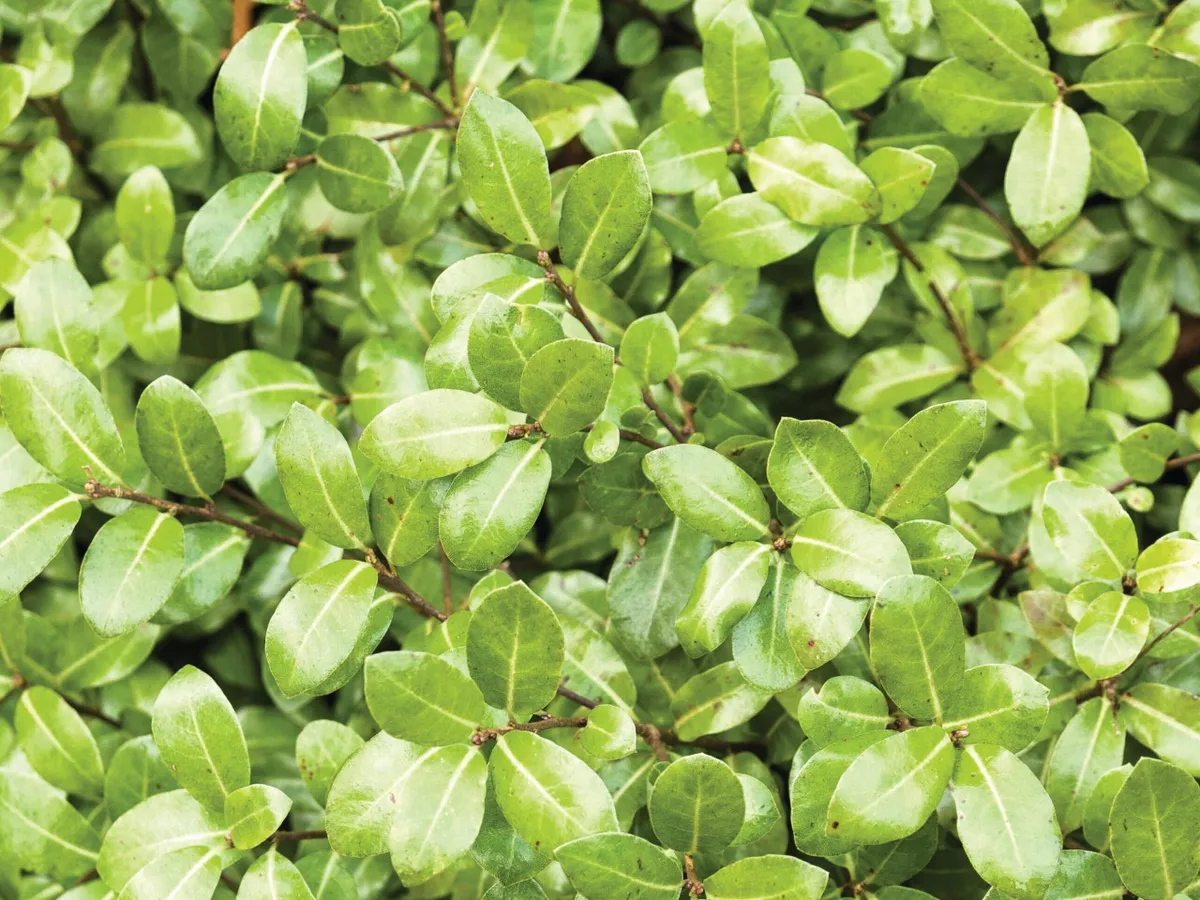
IN BRIEF
What Compact to large, evergreen shrubs – or in some cases, small trees – that come in a vast array of coloured and varied foliage types. They are deservedly popular as they are easy to propagate, versatile evergreens that can be employed as hedging plants and evergreen punctuation in all but the coldest gardens.
Origins Pittosporum tenuifolium is native to New Zealand while the fragrantly flowered Pittosporum tobira is from Japan and Korea. Other species can be found in parts of Eastern Asia, Australia and South Africa. Season Mostly year-round interest, though some species are prized for their scented flowers in early summer.
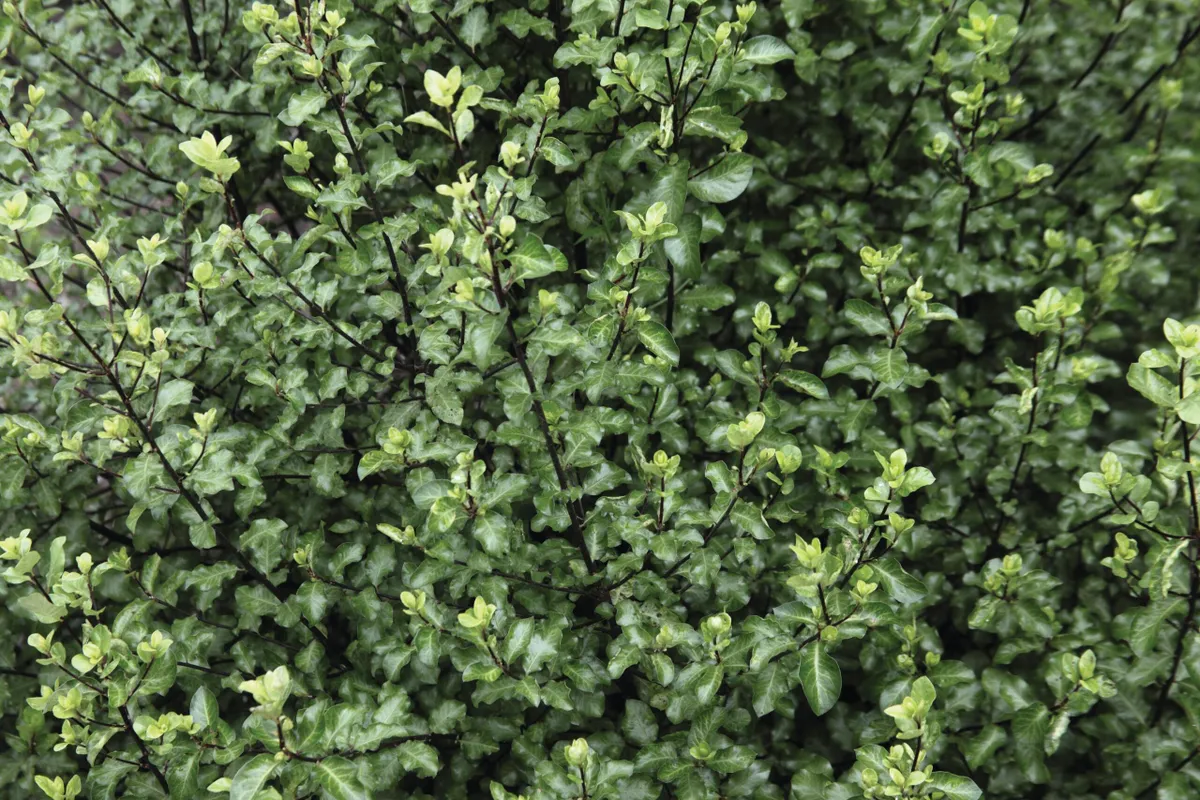
Size Depending on species from 60cm up to 10m. Conditions Full sun with some shelter from cold, drying, winter winds. Great for coastal and city gardens where winter cold extremes are less severe. Hardiness Generally hardy down to -10ºC – though some species are only suitable for milder areas – with an RHS hardiness rating of H3-H4, and suitable for gardens in USDA zones 8a to 10b.
The best Pittosporum to grow
Pittosporum tenuifolium ‘Tom Thumb’

A popular mound-forming, purple-leaved cultivar with myriad uses, from container gardening to low hedging. Young leaves are a pale green and give a playful contrast to the older, vibrant foliage. Height and spread: 1m x 1m. AGM*. RHS H4, USDA 8b-10a.
Pittosporum tenuifolium
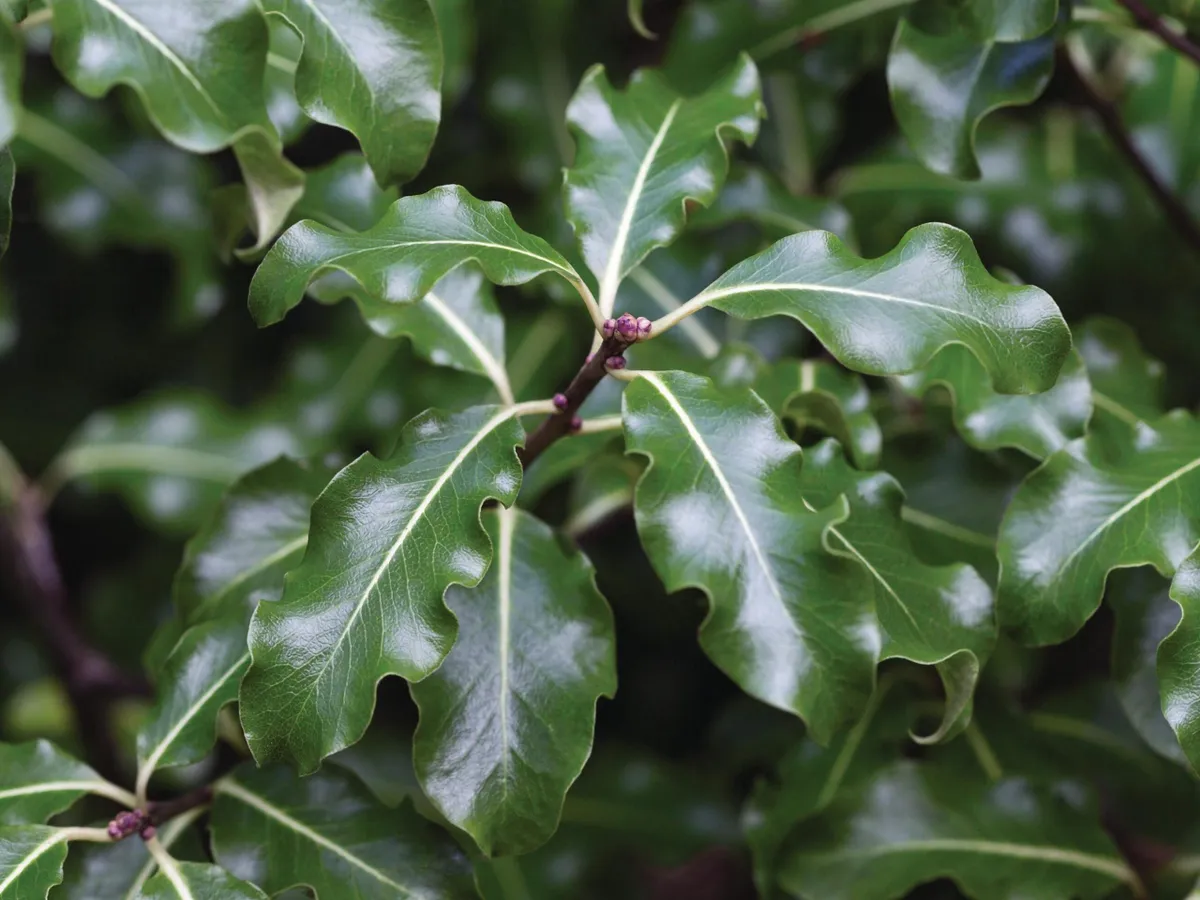
Although less common than its many cultivars, the straight species is still an attractive and versatile plant, useful as hedging or a standalone small tree, or used for clipped structure. Its light-green foliage is much brighter than privet or Osmanthus. 6m x 4m. RHS H4.
Pittosporum tenuifolium ‘Purpureum’
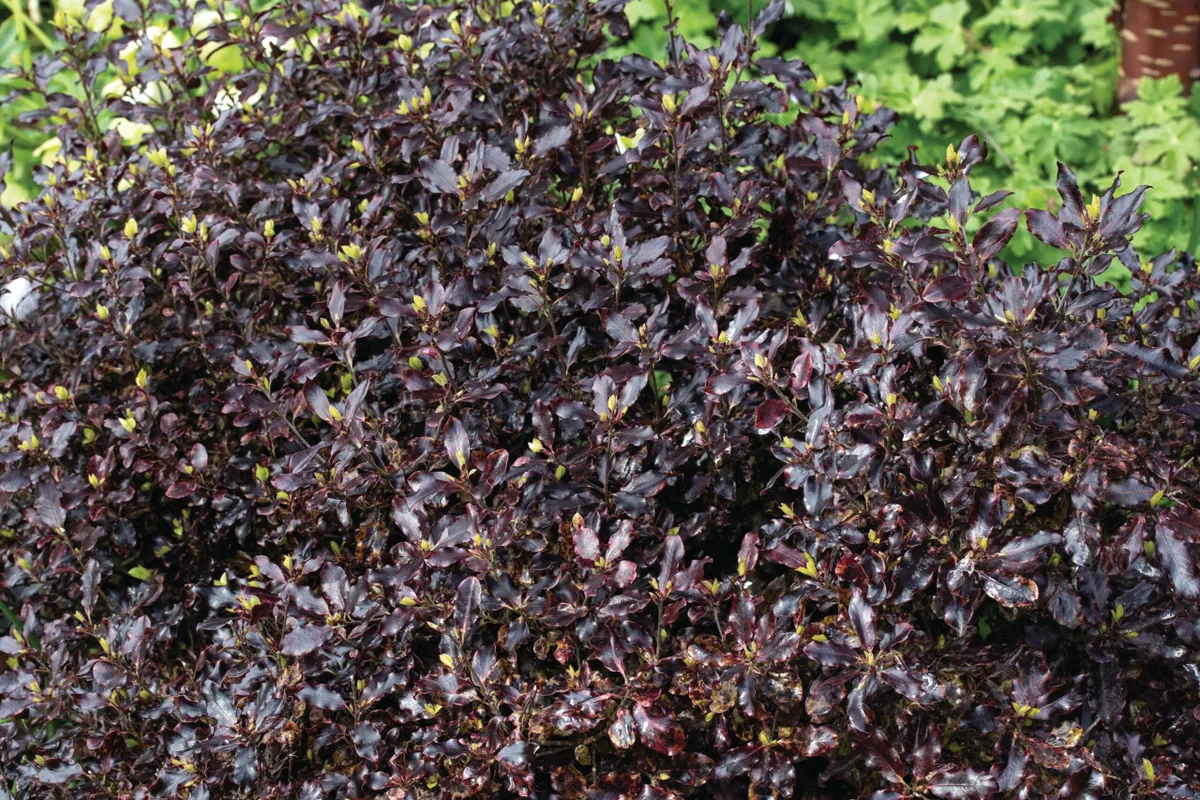
A useful plant for its evergreen purple foliage. It has an upright habit. The glossy leaves are a deep purple in colour and are a brilliant contrast to other silver-leaved plants, or pale-blue flowers. 3m x 1.5m.
Pittosporum tenuifolium ‘Wrinkled Blue’

A nicely distinct cultivar displaying a silvery blue haze to the small, glossy leaves, which are rather sparsely arranged on wiry, black stems and have a slight crinkle. Clips and shapes well and is vigorous in habit. 4m x 2m.
Pittosporum eugenioides ‘Variegatum’
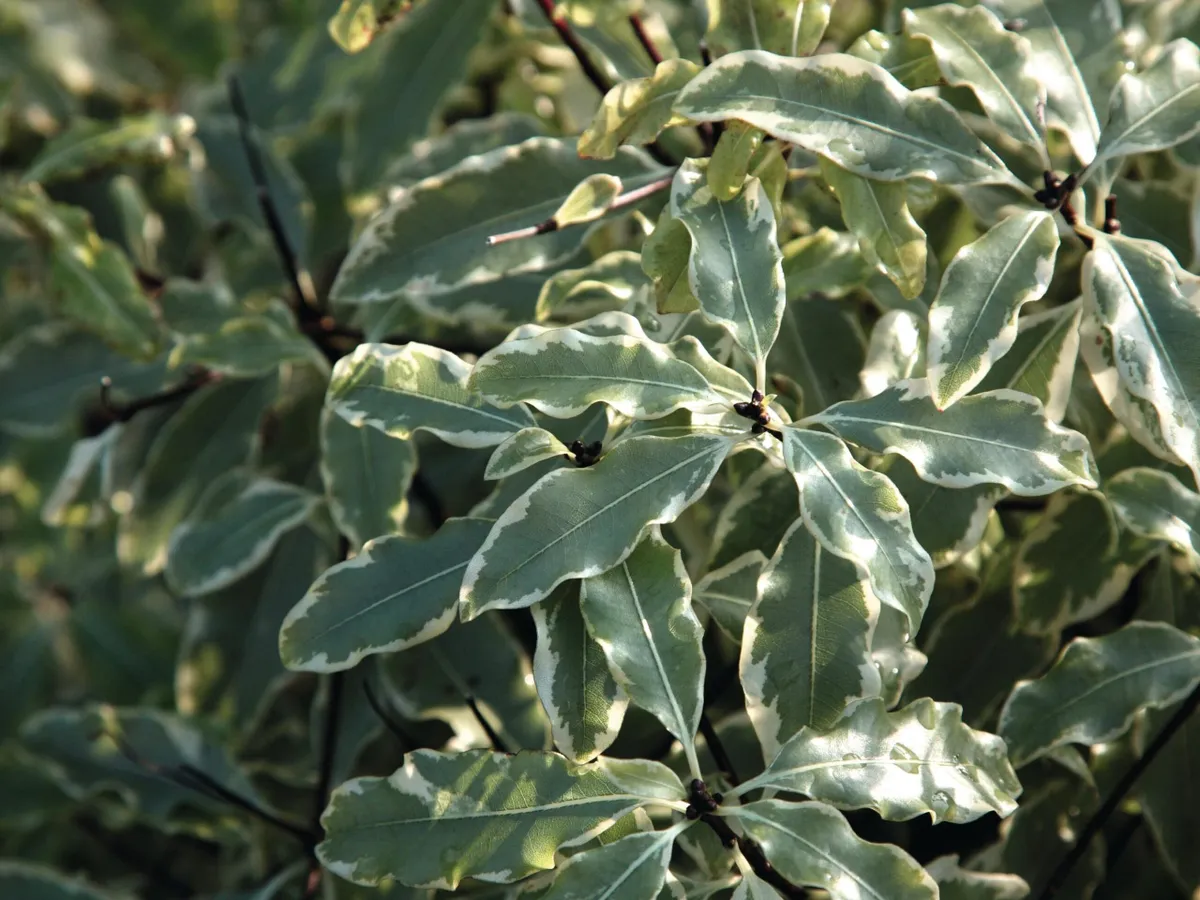
One for milder gardens, this large-leaved species has a wonderfully exotic look to it, and the variegation gives the whole plant a white/yellow hue. The foliage is lemon scented. In ideal conditions, it can make a small tree. 5m x 2m. AGM. RHS H3.
Pittosporum tenuifolium ‘Irene Patterson’
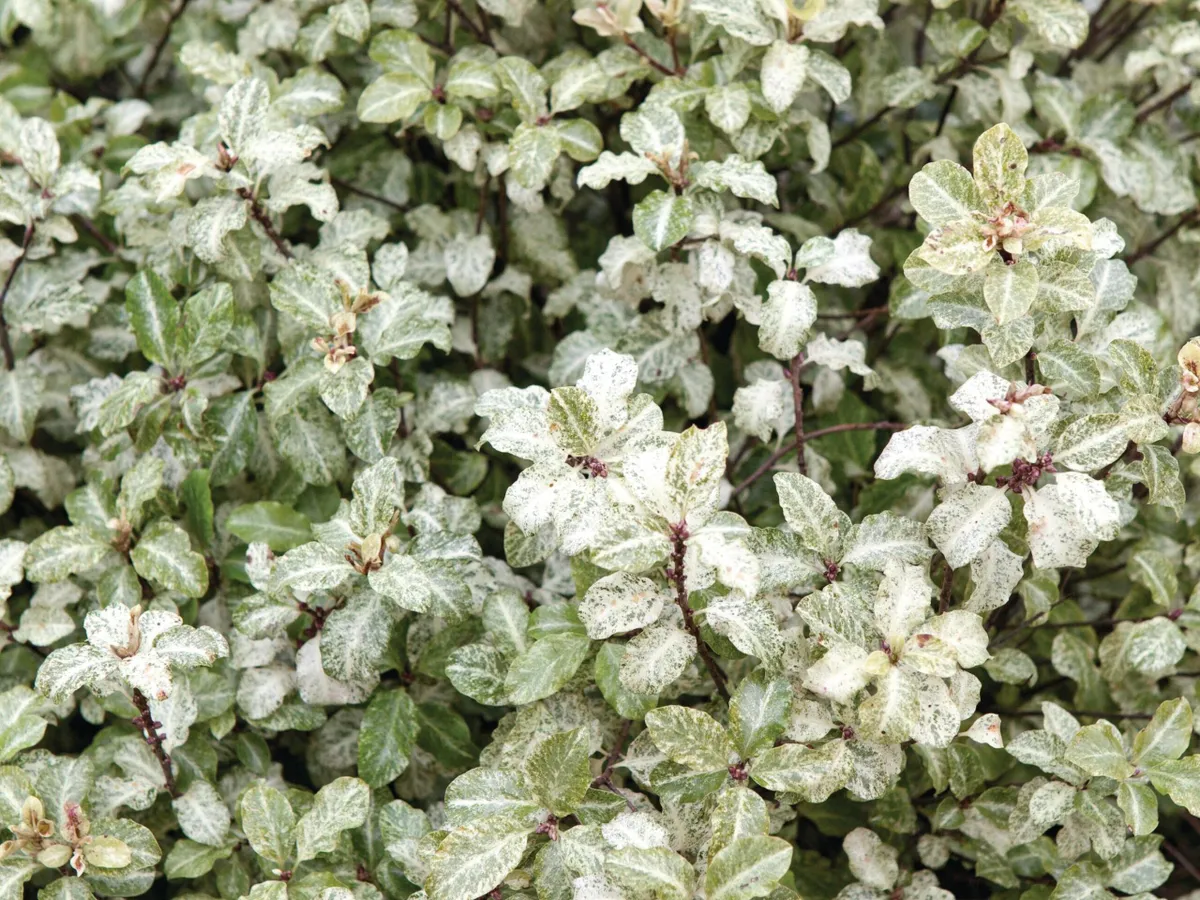
A personal favourite with heavily variegated leaves, splashed with white, in a somewhat random fashion, which look striking when the plant is viewed as a whole. The young stems are black. 1.5m x 1.5m. AGM. RHS H4.
Pittosporum tenuifolium ‘Silver Queen’

This classic white variegated Pittosporum has elegant green leaves with wavy white margins that are complemented by almost-black flowers. Creates a very bushy, large shrub in only a few years. 4m x 2m. AGM. RHS H4.
Pittosporum tobira

In early summer, the large, glossy, deep-green leaves, are complemented by scented flowers with an orange blossom fragrance. Enjoys a free root run. Up to 8m (but usually 2-5m) x 3-4m. AGM. RHS H3, USDA 9a-10b.
Pittosporum tenuifolium ‘Tandara Gold’
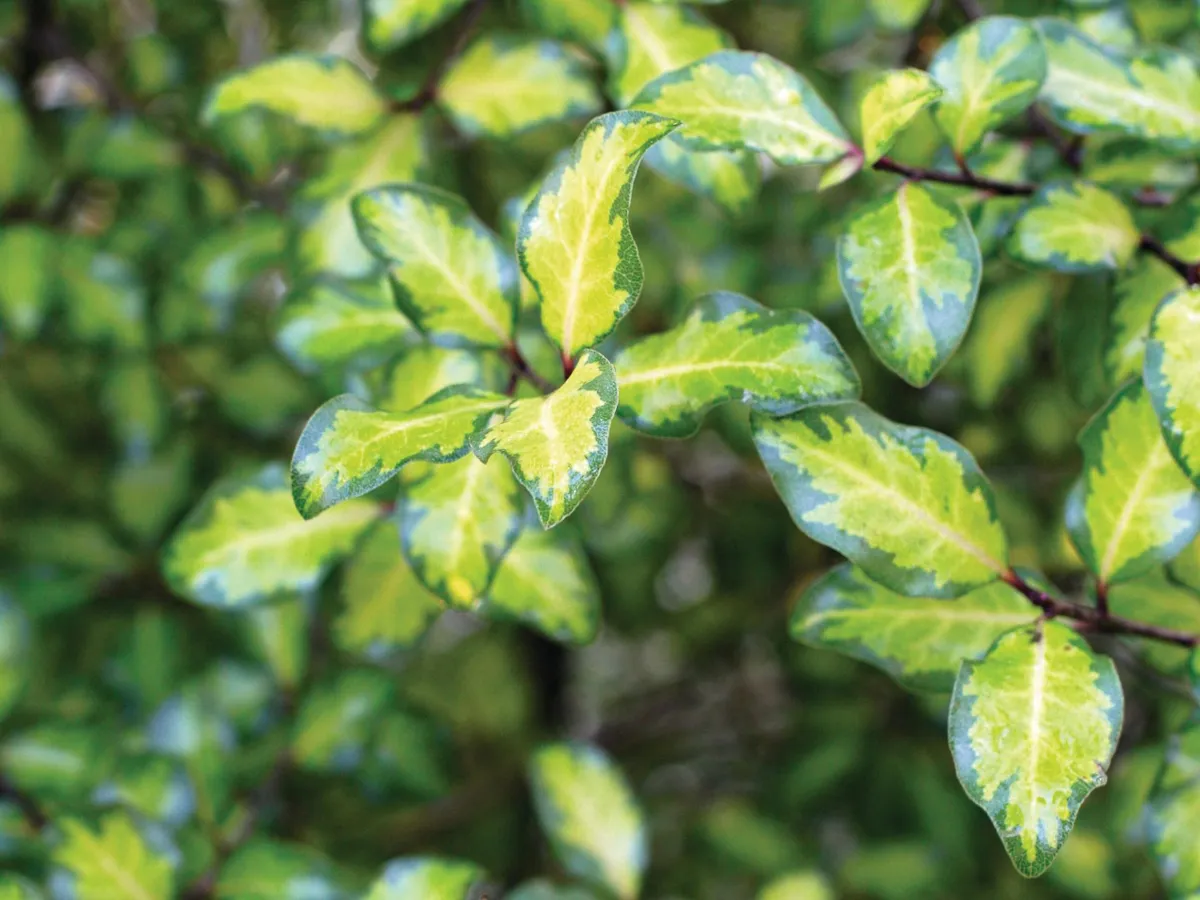
A heavily variegated cultivar with glossy leaves that have a buttery yellow variegation, central on the leaf, creating a pleasing effect. Clips well and looks good in containers when young. 3m x 1.5m.
Pittosporum crassifolium ‘Variegatum’
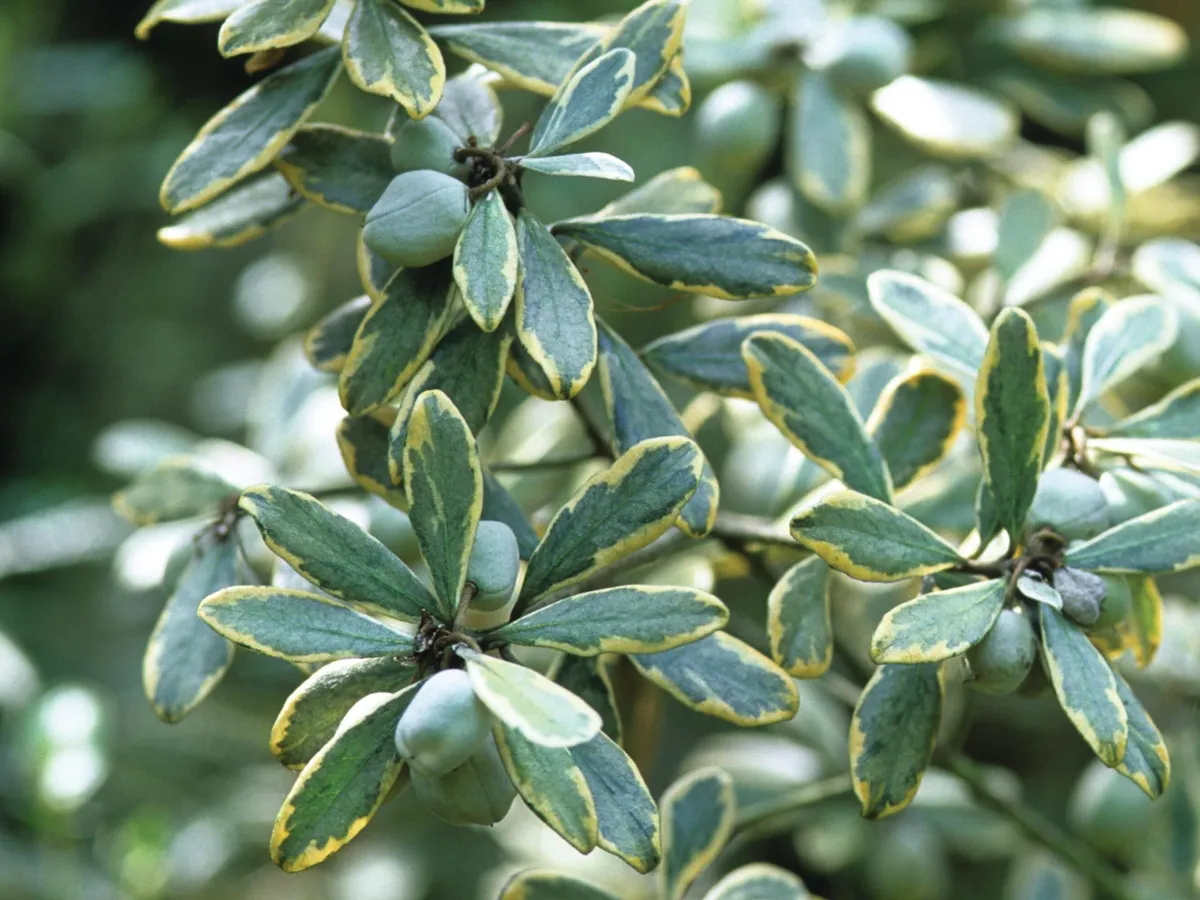
Its deep, wine-red flowers contrast beautifully with the grey-green leaves, with a silvery white underside and a gentle, yellow margin. Ultimately a small tree, if conditions are right. 5-10m x 2-5m. RHS H3.
Pittosporum tenuifolium ‘Oliver Twist’
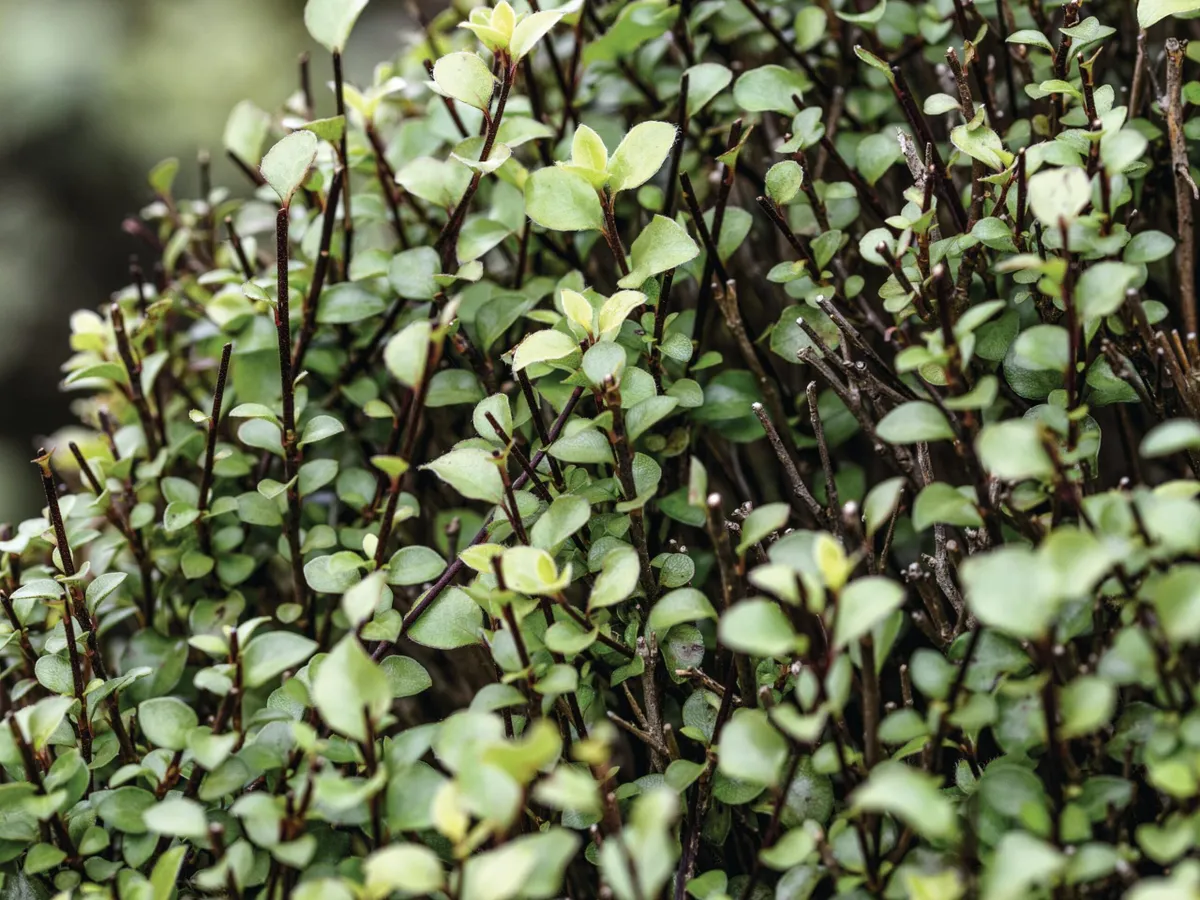
A cultivar with dainty, small leaves that can be clipped, to great result. A warmgold variegation adds a slight yellow hue. Can be left to grow into a wispy, free-standing shrub. 4m x 2.5m. RHS H4.
Pittosporum tenuifolium ‘Golf Ball’

A deservedly popular cultivar, which makes a tidy hummock of fresh-green foliage. Juvenile leaves are a shade lighter than older foliage. A useful cultivar for containers, and adding evergreen punctuation to a border. 1m x 1.2m.
Pittosporum tobira ‘Nanum’
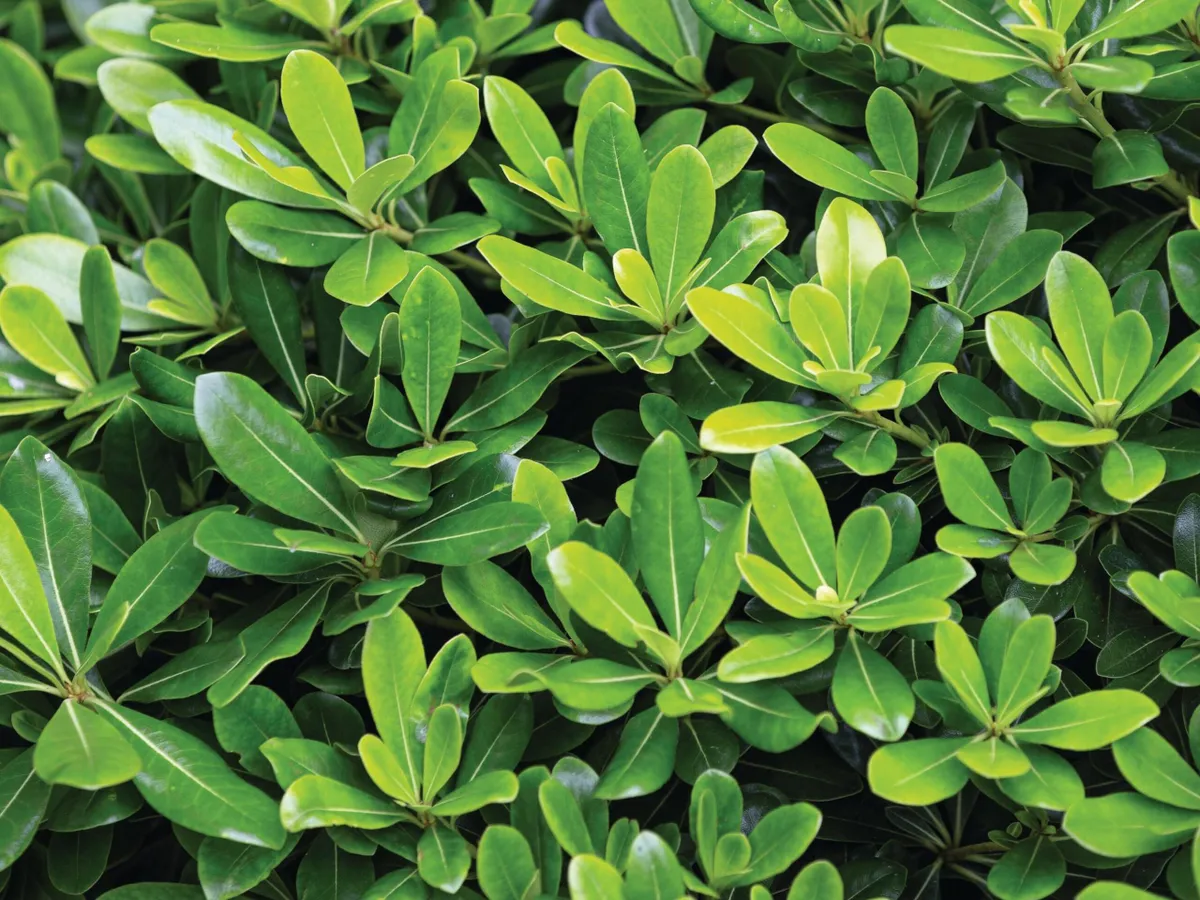
An excellent, compact alternative to the straight species, which forms exotic-looking mounds of foliage. Its scented flowers are best enjoyed on a more compact plant. 60cm x 60cm. RHS H3, USDA 9a-10b.
Where to buy Pittosporum
Architectural Plants Stane Street, North Heath, Pulborough, West Sussex RH20 1DJ. Tel 01798 879213, architecturalplants.com
The Palm Centre Ham Street, Richmond, Surrey TW10 7HA. Tel 020 8255 6191, palmcentre.co.uk
RHS Garden Hyde Hall Creephedge Lane, Chelmsford, Essex CM3 8ET. Tel 01245 402019, rhs.org.uk/gardens/hyde-hall